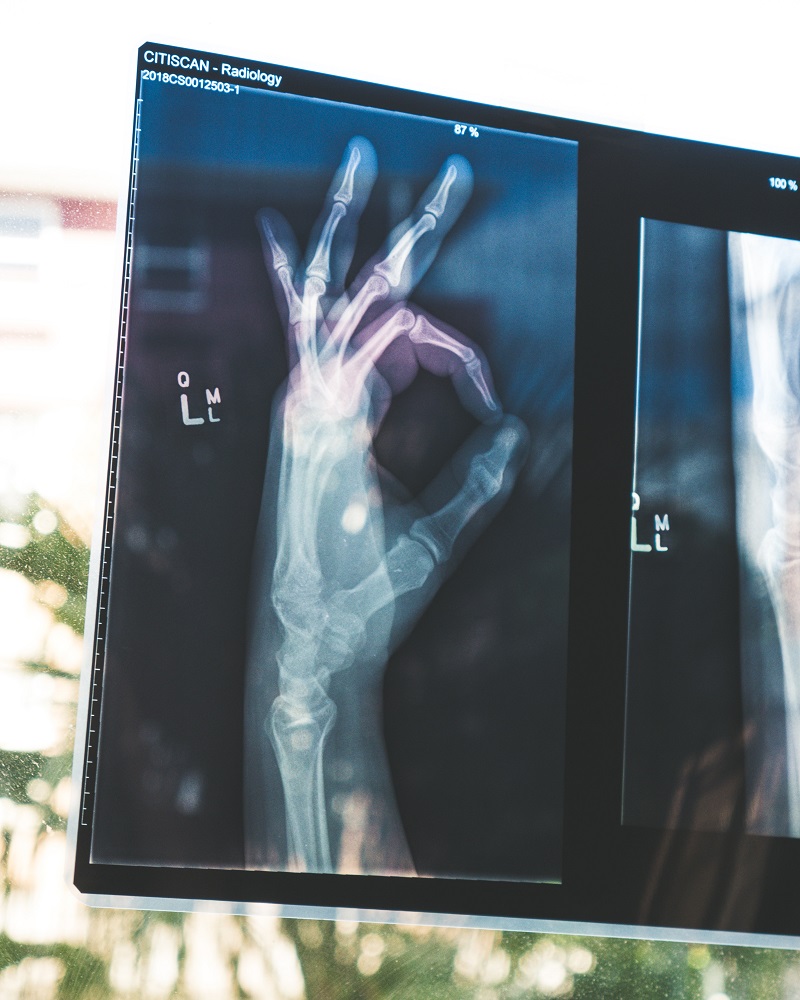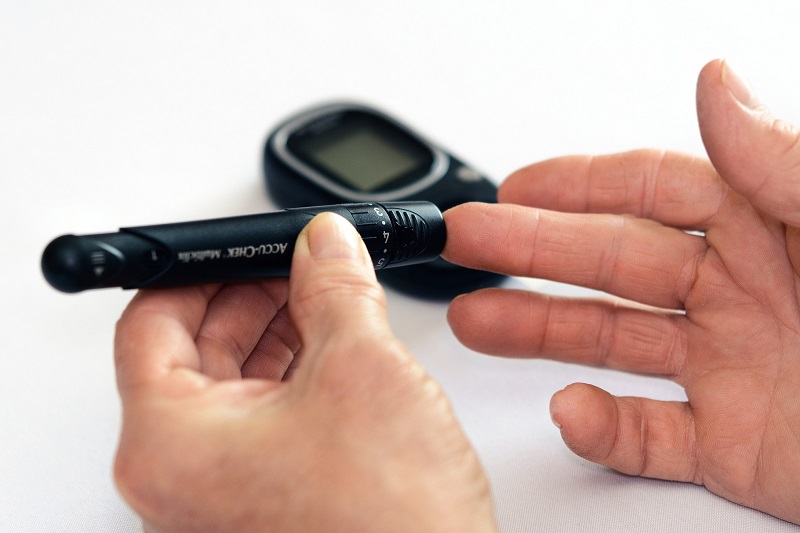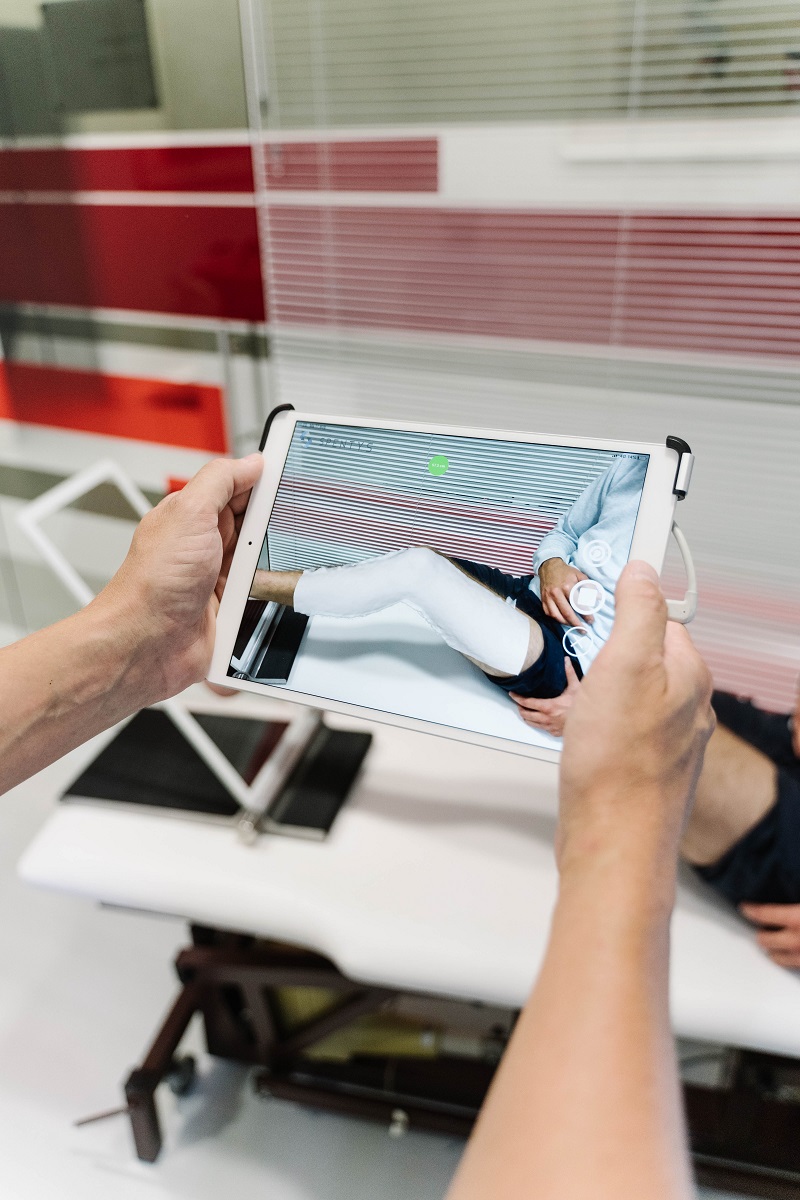The NHS has been on a digital journey for over a decade.
However, prior to the COVID-19 pandemic, uptake was piecemeal and this left trusts in varying stages of maturity in terms of their adoption of innovative technology to drive efficiencies and improve the patient experience.
Since early 2020, however, medtech investment has gathered pace and 2023 is expected to be a pivotal year for the sector.
In this article we speak to industry leaders and technology companies to find out which solutions will most likely be implemented over the next 12 months, and how these can be deployed in the most-effective way.
McKinsey estimates that global digital health revenues will rise from $350billion in 2019 to $600billion in 2024, fueled by consumer demand for innovative and enhanced digital healthcare solutions.
In the past year alone, Amazon acquired One Medical, and technology giants like Apple, Google, and Microsoft all now have direct-to-consumer offerings to support healthcare.
Speaking to BBH, Bernard Ross, chief executive and founder of Sky Medical Technology, explains: “The COVID-19 crisis has been felt more acutely in healthcare than perhaps any other industry and the pressure to address the immediate threat to people’s lives led to the redeployment of doctors and nurses, reducing capacity elsewhere in the system.
“A more-positive outcome, however, has been the increase in the speed at which innovation has been adopted.
Improving outcomes, reducing cost
“It is no exaggeration to say that innovation which, before the pandemic, would have taken a decade to adopt, is now being fast-tracked into the UK’s healthcare system – particularly if it achieves the dual goal of better clinical outcomes and reduced cost.
“But, while predicting the future is a risky business at the best of times, there are some clear trends emerging in healthcare that pose important considerations for the medical technology industry through 2023 and beyond.”
Telemedicine and remote diagnostics will continue, but the future will focus on balancing convenience with patients’ needs for face-to-face appointments
As he says, key to future investment is the dual aim of reducing costs and improving clinical outcomes and the overall patient experience.
Telemedicine, therefore, is one key area which will remain at the forefront.
“The pandemic triggered an increase in telemedicine solutions, with consultations largely moving to virtual platforms,” said Ross.
“This helped healthcare professionals (HCPs) remain safe but impacted healthcare delivery as many conditions simply cannot be identified via video or phone calls.
A hybrid model
“HCPs have realised that some patients struggle to get appointments, or become frustrated with remote diagnostics, and 2023 will see this trend begin to reverse in favour of a hybrid model.
“Telemedicine and remote diagnostics will continue, but the future will focus on balancing convenience with patients’ needs for face-to-face appointments.”
In particular, Ross said the use of remote monitoring devices that enable patients to self manage and report on their health and wellbeing from their own homes will continue to gain traction.
“MedTech that allows patients to manage their conditions remotely reduces the need for frequent check-ups,” he adds.
“The deployment of clinical-grade monitoring equipment has the power to make care more efficient, providing treatment to patients only when they need it.
“Remote treatment will also increase, enabling hospital-to-home care to support overwhelmed frontline staff.
“Moving forward, patients can address issues in the home that previously would have required a hospital visit, helping keep patients experiencing delays for surgery comfortable while they await treatment.”
Cancer care, in particular, will continue to be digitised as we move into the new year.
Paul Landau, founder and chief executive of Careology, said: “There is no doubt investment into digital cancer care services will increase.
“As people wait longer for treatment due to the backlogs, tech for cancer services which is implemented while people wait for treatment will help to provide a better patient experience and tackle inequalities.
“At Careology we are already seeing a focus from NHS trusts and private providers who want tech which enables their cancer care teams to be more reactive by providing a holistic view of everyone in their care.
“There’s a huge opportunity for technology in cancer care to not only provide a more-personalised experience for patients, but to drive efficiencies in the way clinicians provide care using a blended digital/physical approach.”
Next-generation care
So too will technology be able to take pressure off swamped primary care clinicians, with online consultation and next-generation care navigation platforms having an immediate positive impact on service efficiency.
For example, these solutions have enabled patients to contact their GP practice about an issue at any time, from anywhere, avoiding the dreaded 8am telephone appointment ‘scramble’.
Craig Oates, managing director at Doctrin UK, said: “Digital triage solutions ensure patients are directed to the right healthcare professional for their needs, which could be a pharmacist or nurse, freeing up GP capacity for those who need it most.
There’s a huge opportunity for technology in cancer care to not only provide a more-personalised experience for patients, but to drive efficiencies in the way clinicians provide care using a blended digital/physical approach
“This helps practices treat more patients, more effectively, in less time and at less cost.”
Alastair Allen, chief technology officer at Better, adds: “As integrated care matures, we will see more tech R&D focused ‘beyond the hospital walls’ and into the home.
“To support this, we will see continued investment in wearables and remote patient monitoring devices.”
Hospital at home
And Alan Payne, group development director at The Access Group, comments: “In 2023, I expect to see continued investment into NHS virtual wards, which will allow patients to get the care they need at home safely and conveniently, rather than being in hospital.
“Against the backdrop of an ever-worsening staffing crisis, and with resources stretched to the limit, virtual wards will be critical for both health and care providers as a means of saving time and money by allowing software and data to direct their priorities, while also benefiting the patient with a more-comfortable recovery process away from hospital.”
Underpinning much of this new technology will be a focus on artificial intelligence (AI) and machine learning (ML), technologies.
Carolina Wosiack, managing director at CI&T, said: “AI and machine learning have an important role to play, automating many of the administrative requirements related to patient care and leaving clinicians with more time for face-to- face care, which is vital as we look to address the burgeoning backlog.”
Eric Landau, chief executive at Encord, adds: “2022 saw some exciting progress for healthcare AI, including some big funding announcements in the field.
Machine learning and artificial intelligence will underpin improvements in health services, including driving back office efficencies and diagnostic and treatment pathways
AI investment ‘a priority’
“Moving into 2023, radiology is definitely the field that has been seeing the most activity and this year will be especially exciting because we’re going to start seeing more of these models reach the production stage, so they’re going to start having a real clinical impact.
“This development is exciting in itself, but it will also draw a lot of attention to the field, which will ultimately attract further funding and drive further progress.”
And Encord president, Ulrik Stig Hansen, said: “The disciplines within healthcare that are most likely to see widespread adoption of AI in 2023 are those for which the technology will save time or increase efficiency for doctors.
“For example, doctors have to spend a lot of time doing paperwork, so any systems that can automate these administrative tasks will be especially valuable.
AI and machine learning have an important role to play, automating many of the administrative requirements related to patient care and leaving clinicians with more time for face-to- face care
“It might not be as exciting as an ML model that can diagnose cancer, but the reality of using these systems widely is that doctors will have more time for patients because they spend less time working through documentation.
“These kinds of tools can also come to market relatively quickly because they don’t require the stringent testing and regulatory processes that diagnostic models or medical devices do.”
Radiology will be a key focus area for digitisation during 2023
Supporting medical trials
AI and ML technologies will also play a key role in medical trials moving forward, according to Wosiack.
She told BBH: “Looking to the future, decentralised medicinal trials, in which the trial process is moved into patients’ homes, can remove bottlenecks and harness tech such as AI and ML to enable even-faster trial results.
“However, we can’t expect this to become the norm just yet.
“Instead, a hybrid mix of onsite patient and remote visits, using healthcare facilities close to the patient’s home, will begin to form the basis of upcoming trials until full decentralisation is more widely accepted.”
The launch of Integrated Care Systems (ICSes) will undoubtedly support these digital investments, enabling truly-joined-up healthcare services and looking at wider geographical areas rather than single trusts.
However, any success in this area will rely on improvements to IT infrastructure to enable true interoperability.
Getting the full picture
Paula Ridd, general manager of Altera Digital Health UK, comments: “The biggest investments in health technology will be focused on helping ICS organisations to share information more effectively, so they have a full picture of every patient in their care.
“However, simply deploying technology will not have the impact needed. How it is implemented and joined up is just as important.
“Data sharing holds huge potential to drive transformation, create efficiencies in care delivery, and improve patient experiences of care.
An important step will be to ensure that the data and interoperability standards being created for the NHS are extended to all ICS organisations, or data will stay siloed and joined-up care will always remain an ambition
“However, interoperability between systems and across care settings is a prerequisite for making this a reality.
“Interoperability is essential if projects like this are to be scaled and for the whole ICS to benefit from technology investment.
“There is a lot for us to learn from countries with more-digitally-mature health systems that are already benefiting from this approach, such as in Israel, which shares its patient data nationally.
“An important step will be to ensure that the data and interoperability standards being created for the NHS are extended to all ICS organisations, or data will stay siloed and joined-up care will always remain an ambition.”
Improved infrastructure is also key, according to Roland Harvey, enterprise account executive at Logic Monitor.
Connecting the dots
He said: “Like many organisations, the NHS has suffered from legacy and outdated technology. This is not helped by the fact that hospitals, GP clinics, and other health services are not always connected and there can be a number of disparate systems that should be connected, but aren’t.
“Reconciling systems can be a real challenge, and a lack of intelligent IT management tools across the board can lead to teams missing important infrastructure degradation.
“In extreme cases, poorly-managed systems can actually impact patient wellbeing, especially if test results and other crucial information are not accessible and communicated in an appropriate timeframe.
“With so many applications, and so many people adding solutions and products independently, it can become a sprawling mess and there needs to be a way to properly view applications and the associated IT infrastructure they rely on to understand exactly what is working and what isn’t.
“Performance must be visible and clear in real time, with the ability to see degradation ahead of outages to prompt teams to take action before it affects clinical applications and the patients.”
He argues that the key is to implement unified observability – for example in the form of a simple dashboard which monitors performance and issues, using a traffic light system to both highlight problems and let people know all is well.
With so many applications, and so many people adding solutions and products independently, it can become a sprawling mess and there needs to be a way to properly view applications and the associated IT infrastructure they rely on to understand exactly what is working and what isn’t
“It’s especially critical that this be easy to understand for laypersons as administrators and directors at NHS trusts and other NHS operations may not actually be qualified IT professionals and will need simple, intuitive ways to understand performance. This can, and should, also be predictive as well as reactive,” he adds.
Increasingly, technology will be used to enable patients to monitor their own health at home
Sharing data
Once interoperability is achieved, data will be another key tool.
Mifan Careem, vice president of solutions architecture and head of healthcare practice at open-source technology provider, WS02, explains: “From fitness bands, to smart watches, consumers are increasingly turning to wearable devices to track key health measures.
“At the same time, employers and health insurance organisations see these devices as one way to improve health among staff and members and reduce programme costs.
“This presents a tremendous opportunity for innovation in the healthcare industry, but too often the scope of information is limited by the inability to share data with them.
“This is because the healthcare data is locked up in a variety of healthcare systems using different formats and standards.
“In 2023, organisations in the healthcare industry need to move toward a scenario where they only access data with explicit consent from the owner, the patient. And the key to doing so is through consent management.
“It’s not enough to have some vague digital signature. The patient needs to have the opportunity to give, or deny, consent to a specific application.
“Moreover, patients should be able to decide which data is available to which healthcare and insurance providers, as well as establish time-based consent for how long this access will remain in place.
“Only in this way can organisations in the healthcare industry support consumers’ rights to protect and control their personal health information.”
More-personalised care
He predicts that, through 2023, the industry will move toward using application programming interfaces (APIs), ideally in the Fast Healthcare Interoperability (FHIR) format, as an intermediate layer for exchanging electronic health records.
In this way, data can be readily and securely provided to stakeholders, such as third-party organisations, internal or external developers, and other apps or systems, in order to deliver new, meaningful, and more-personalised digital healthcare apps to consumers with wearable devices.
In 2023 I’d like to see providers with limited budgets reshape the way they approach interoperability by maximising the investment they have already made in IT systems
He adds: “An all-too-often-forgotten concept of healthcare is that real data ownership belongs to the patient, even though the health care provider might be the custodian of this data.
“This needs to change in 2023 as consumer demand for innovative and enhanced health care solutions continues to rapidly grow, fueled by aggregated health data apps, wearable devices, and telemedicine.”
Sky Medical Technology's Bernard Ross spoke to BBH, outlining his predictions for medtech investment over the next 12 months, including home care and telemedicine
Funding the future
So, with so much expected investment in digitising health services, where is the money going to come from?
The Government has announced a number of funding streams, including over £175m for genomics research, £800m for research into ground-breaking new treatments; and a number of multi-million-pound moneypots to drive AI and ML innovation.
But technology providers also need to play a part.
Tien Tzou, chief executive and founder of Zuora, said: “Healthcare will be a next major industry in the subscription economy.
“In 2023, I expect to see more opportunities emerge for companies to create and monetise direct relationships with patients through connected devices.
“We will see even more companies exploring healthcare-as-a-service to provide their subscribers with new offerings – think Amazon Prime for healthcare.
“But, although access to healthcare data opens up possibilities to provide new services to subscribers, these companies must prioritise privacy and build trust over time.”
Maximising investment
Andy Meiner, chief revenue officer at ReStart, adds: “In 2023 I’d like to see providers with limited budgets reshape the way they approach interoperability by maximising the investment they have already made in IT systems. This means plugging existing gaps in functionality, which will help deliver efficiencies and benefits by improving outcomes and patient experience.
“As ICSs develop, it’s vital that interoperability doesn’t get kicked down the road, particularly for trusts with smaller budgets and less digital capability.
“With this in mind, I hope there’ll be more support for providers to boost interoperability for less money.
“For example, if trusts don’t have budget to replace old systems with a new monolithic system, then they can procure new functionality, such as electronic prescribing, remote monitoring, and patient engagement platforms, and tightly integrate it with existing infrastructure – delivering many benefits of a single system without the cost and disruption.”
Allen concludes: “As suppliers, if we are to help our customers deliver joined-up services that span an entire pathway it will be crucial that technology supports a ‘view + do’ model, with real-time read and write access to data across entire pathways.
“We will see continued investment in data interoperability platforms to support this, with open standards and AI being used to improve data analysis and make personalised recommendations for patients and health and care professionals.
“In my opinion, these investments will also fuel emerging approaches in software development such as low-code, giving care providers the ability and flexibility to build applications without the constraints of a commercial product or the cost of salaried software engineers.
